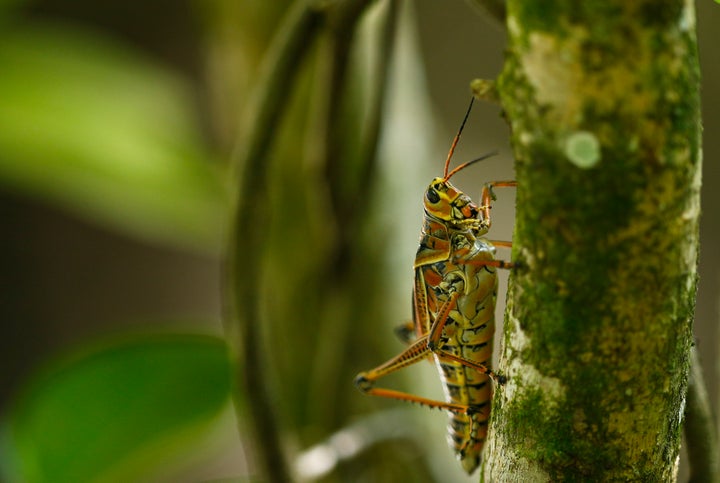
Good morning. Or is it?
Because, while watching QI last night, I discovered something that changed how I look at bugs forever ― it turns out that locusts are made, not born.
The biblical bugs are basically a form of radicalised grasshopper rather than a year-round, distinct species (I’m deadly serious).
If you don’t believe me, you might trust Cambridge University ― who transformed a crew of calm hoppers into swarming locusts by tickling them ― instead.
What are you on about?
The Australian Government’s Department Of Agriculture, Fisheries And Forestry (DAFF) explained that locusts are a species of short-horned grasshopper.
The main difference between a regular grasshopper and a locust, DAFF adds, is that “locusts can exist in two different behavioural states (solitary and gregarious), whereas most grasshoppers do not”.
Locusts are quite calm in their solitary form but turn into the destructive swarms we associate with the species after crowding together.
Scientists from Cambridge, Oxford, and Sydney, Australia wanted to find “the stimuli that cause locusts’ amazing ‘Jekyll and Hyde’-style transformation,” Dr Michael Anstey, who co-authored a study about the subject, said.
They knew that the destructive “gregarious phase is a strategy born of desperation and driven by hunger, and swarming is a response to find pastures new.”
But to “go locust mode,” scientists found that grasshoppers had to experience a boost of serotonin created by a crowd of critters rubbing against each other.
“In the laboratory, solitary locusts can be turned into gregarious ones in just two hours simply by tickling their hind legs to simulate the jostling that locusts experience in a crowd,” the University of Cambridge shared on their site.
When serotonin blockers were used, no amount of tickling or other swarming conditions could make a solitary hopper turn into a gregarious locust.
The change isn’t just mood-based
Locusts and the green hoppers they’re formed from look so different they were considered a different species until 1921, Cambridge says.
That’s because aside from making them hyper-social, the swarming process also changes their colour (from green to brown) and makes them stronger and more mobile.
“These little guys changed from a shy creature that actively avoided making contact with other grasshoppers [into a creature] actively seeking out other insects and joining a gang,” Malcolm Burrows, a zoology professor and the study’s co-author, told Scientific American.
Dr Burrows told Cambridge he hoped learning more about the transformation could help to control the pest, which can devastate crop supplies and are often controlled with pesticides that can be harmful to humans.